A case study tiny house in Tasmania, Australia. Demonstrating what is possible with water management.
By Oliver Heyward

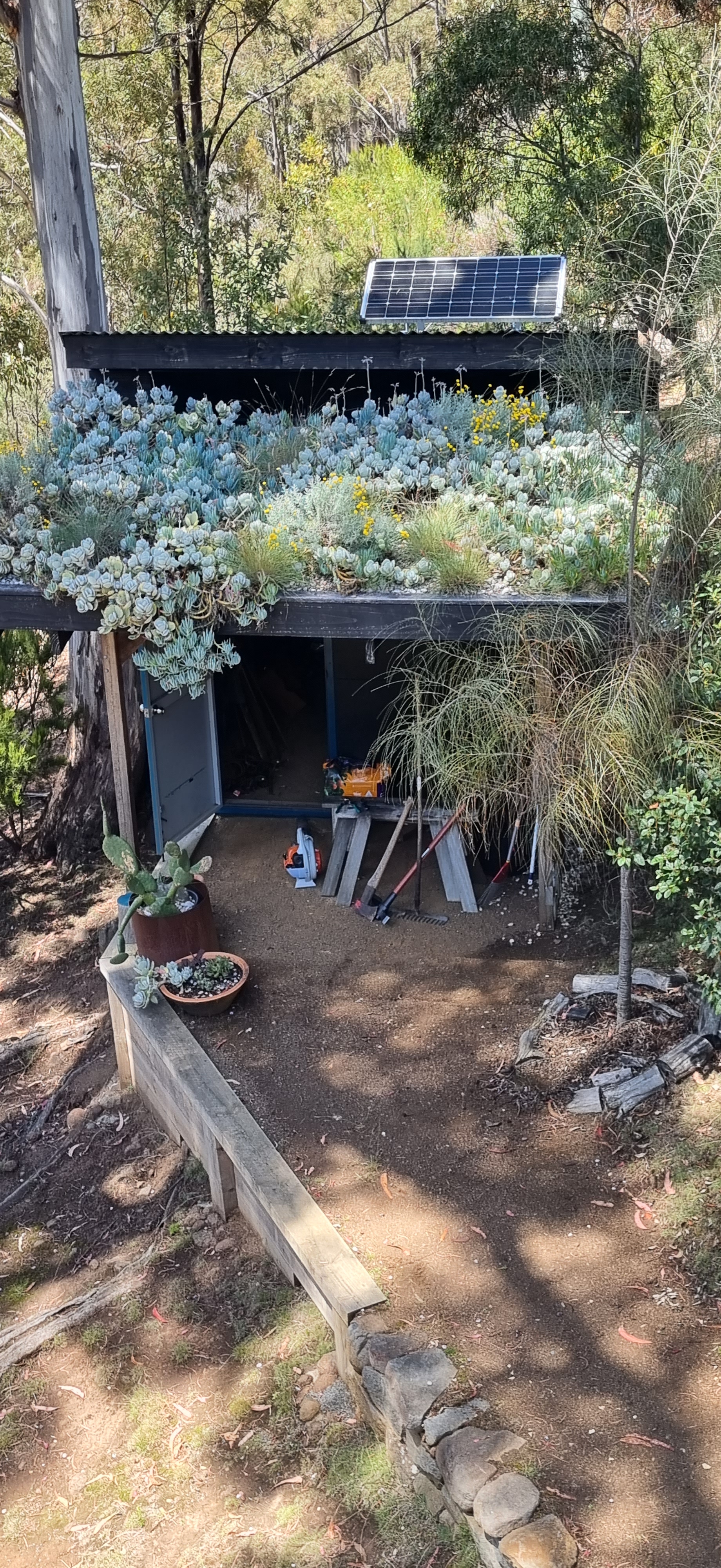
Tasmania is a wild and beautiful corner of our planet. Living within nature comes easily for most of us here. For some, that means daily gazing at the mountains, beaches and rivers we live among. For others, it is being conscious and cautious of the bushfire threat that exists due to the immense wilderness that surrounds our towns and cities. For us, this means living in an off-grid tiny house within beautiful bushland which provides the resources to sustain us – water, firewood, solar energy, fertile soil.
The East Coast of Tasmania is a dry (and drying) climate and water management is critical. Tiny house living for us means that we must capture and store enough rainwater to meet our needs, when it rains. And when it doesn’t, we must monitor the weather forecast and tank levels carefully and moderate our usage accordingly.
In this brief article I hope to give some insight into our experience living in this way, and the approach, through a mix of careful design and trial and error, we have adopted for water management.
Rainwater Harvesting
Our tiny house floor area is 6×3.6m and has a 6x2m roofed verandah, with a bit of eave overhang. This gives a roof area on plan of around 47m2. This might sound large for a tiny house, but the living space is only 32.4m2.
We receive around 600mm of rain per year.
This is not a large roof area, or annual rainfall, for rainwater harvesting, and we catch every drop. We must be very efficient with our usage, particularly when there are extended periods without rain.
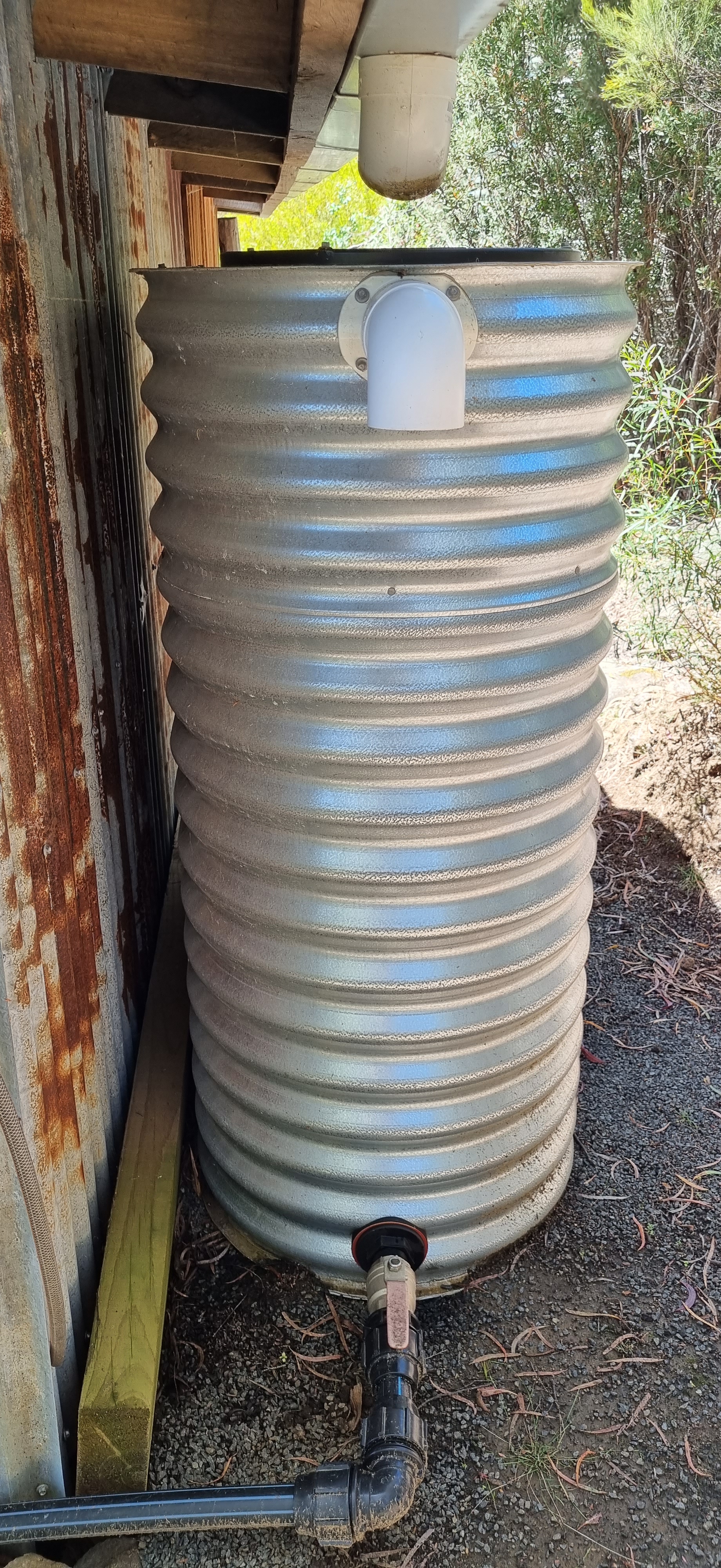
We have a small water tank under the house, 3500 litres, which collects rainwater from our downspouts. We have a pump and pipeline up to a large tank that is 25,000 litres, approximately 8m higher than the house.
We then gravity feed from the large tank to the house supply through a 50mm pipe, which provides a comfortable pressure and flow rate. Even to our shower!
When the tanks are low and there is no rain forecast, we are careful. Very careful! Only essential usage. When the tanks are full and there is more rain coming, we enjoy the water and feed the plants. This is a daily concern, but a manageable one. It is part of life in the tiny house.
Composting Toilet
A key strategy for lessening our water usage, and ensuring that tiny house rainwater harvesting is adequate, is a composting toilet.
We have a ‘Nature Loo’ composting toilet that uses a batch system whereby a ‘bin’ underneath the toilet room is swapped out approximately every three months. We rotate three bins in this way and the two out-of-service bins are always busy composting our waste.
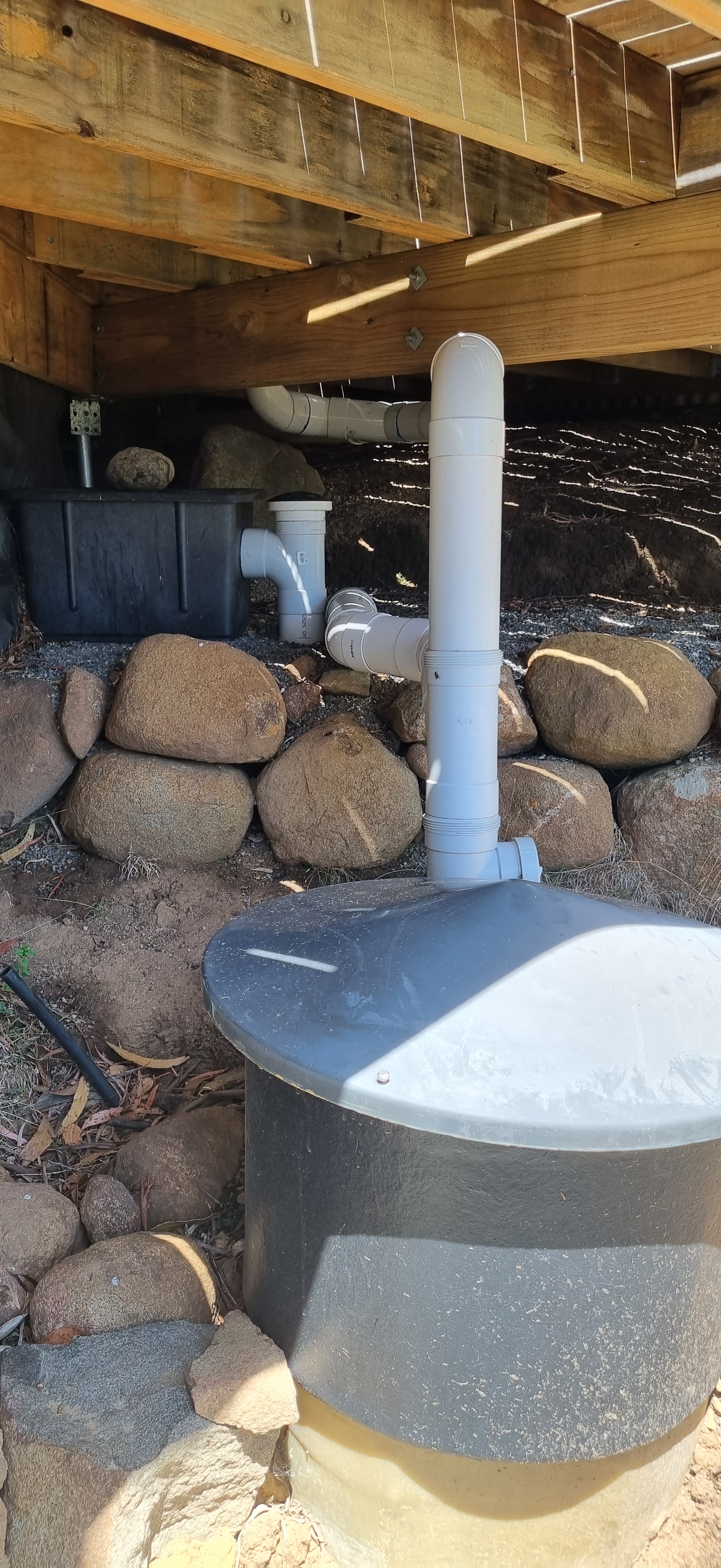

In our temperate climate, the warmer months are more conducive to composting than the cooler months, but we have no problem with this system.
Each new bin gets a handful or two of garden mulch to get going, and it does its job without fuss for the next three months. Composted material is transferred to a garden bed area where it sustainably and naturally fertilises the ground.
Maintenance is minimal and we rarely experience odour or other issues. And our local health inspector gave us the tick of approval for it!
Greywater System
Water from our kitchen sink passes through a grease trap and is mixed with water direct from the bathroom and laundry. It then passes through a lint filter, which is a large mesh cloth placed across a small tank outlet. From there it moves down the hill to a clever device known as ‘drainwave’ which releases water into sub-soil irrigation pipes under a small amount of pressure without using electricity. Water infiltrates into the soil, increasing soil moisture and supporting plant growth.
Maintenance of the grease trap and lint filter follows a similar regime to the composting toilet. A three-month cycle of emptying and cleaning (approximately).
A future initiative will be to make more effective use of the greywater, and it’s high nutrient content, for growing food.
Hot Water System
Hot water in the tiny house is produced by solar evacuated tubes and a ‘wet-back’ system in the back of the wood-fired combustion stove. The combustion stove is the heart of the tiny house, and the fire heat is used for everything – cooking, heating the room, and heating the hot water.
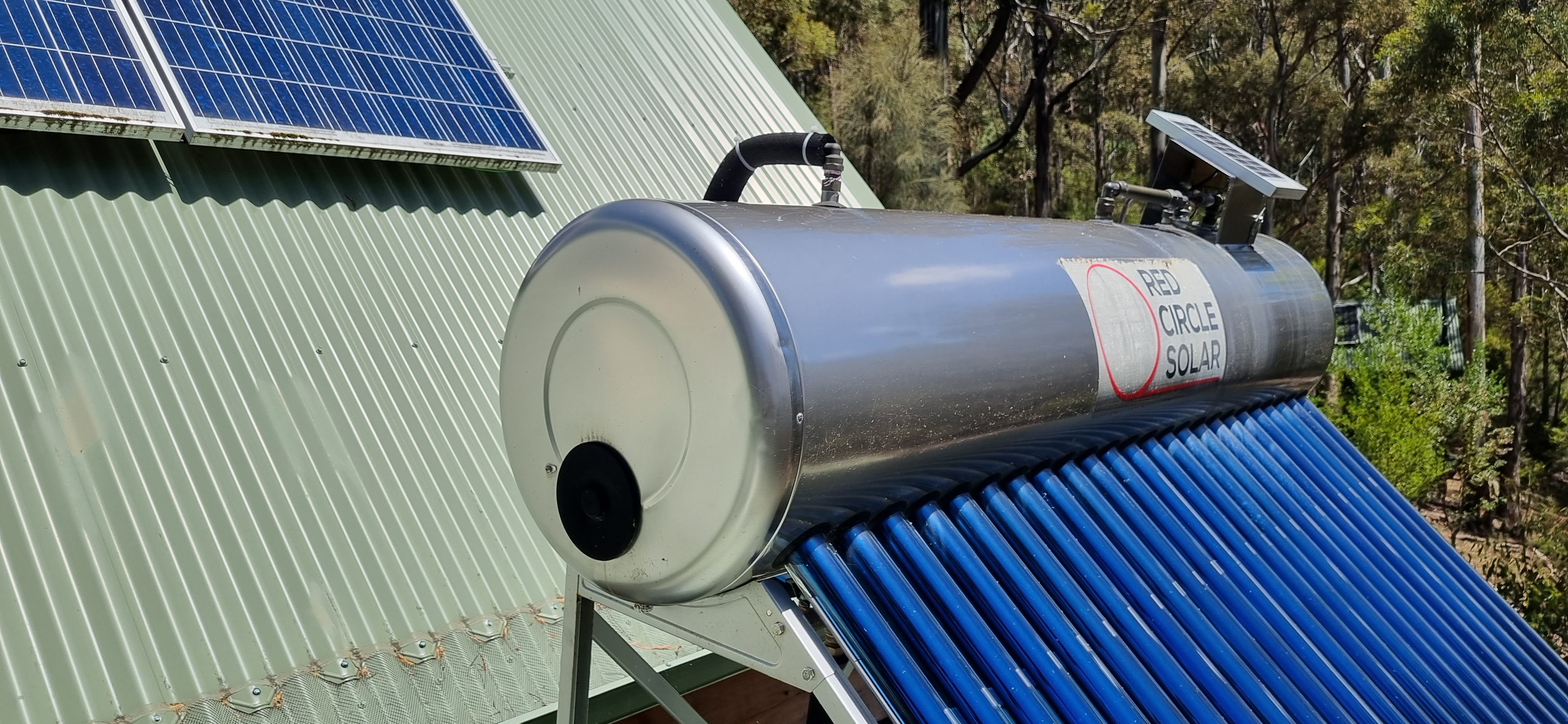
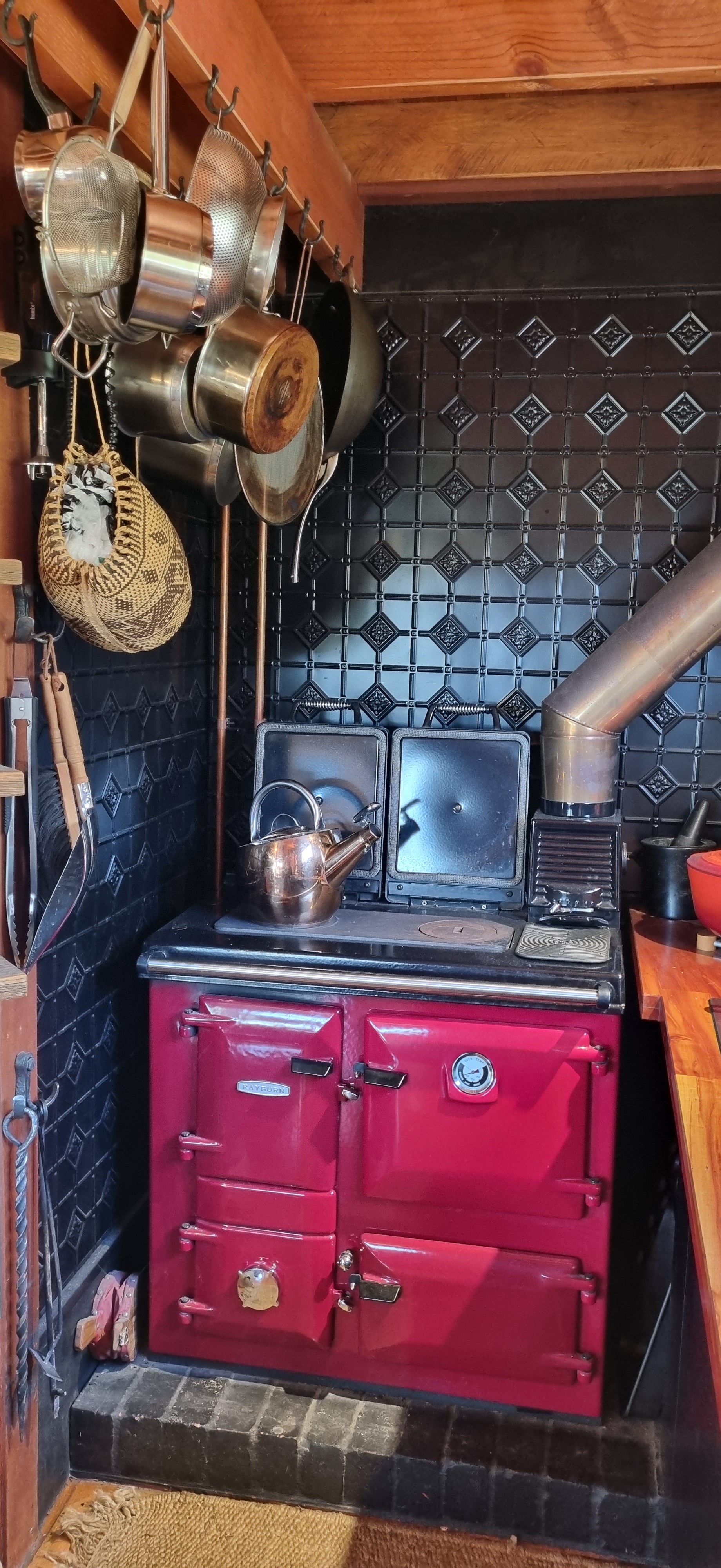
When the sun is shining it heats the water and we turn the combustion stove fire down. When it is cloudy, we turn it up. The temperature of the room is regulated in the same way. Luckily, firewood is abundant on the property and cutting firewood is a part of life.
Some careful design was required to ensure the hot water system functions correctly. There is what is known as a thermosiphon in the copper pipe which, under the heat of the stove, circulates water between the combustion stove and the hot water tank on the roof.
Since the tiny house is off-the-grid for energy also, with a photovoltaic array of solar panels and a lithium battery bank, we rely heavily on the heart-of-the-home combustion stove for heat energy. We would not have the power to run electric hot water or radiators. The careful design of our firewood-based heating and off-grid power however works exceptionally well for our needs.
A Final Thought
Water management, along with energy management, firewood management and garden maintenance, is a way of life at the tiny house, and it is a lifestyle choice that we have made. In some ways this is all a lot of work. But for us it is self-reliance and integrated living with our environment.
With careful planning and design, self-sufficient water management in a tiny house can be achieved and our tiny house in Tasmania is one example of that.
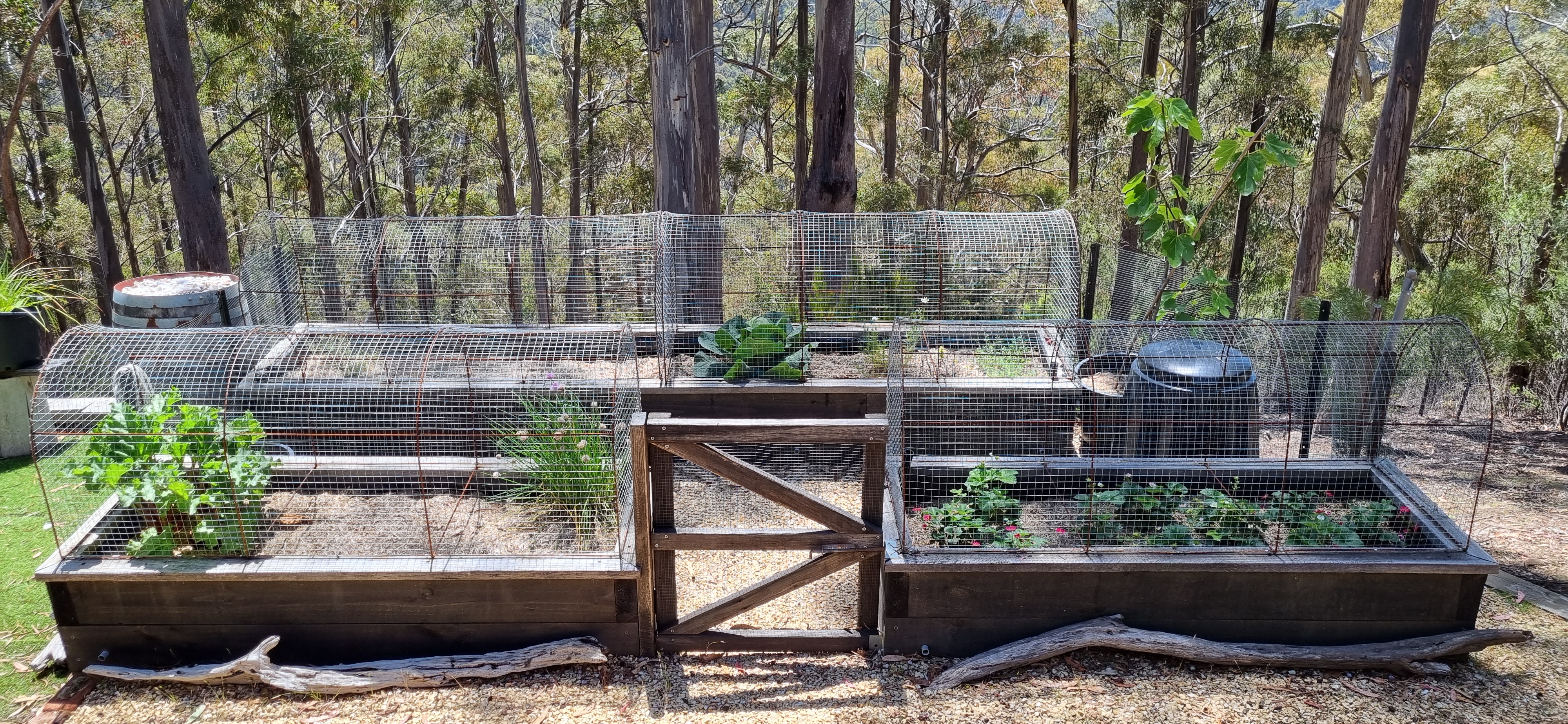

I’d also like to invite you to explore our exciting new project, everydropsaved.com. This website hopes to share great content and valuable information for us all to reduce water consumption at home (tiny house or not), and therefore save money, protect our environment, and prepare for water scarcity, which for many of us across the globe is becoming an increasing challenge.
One of the great website tools we have created is the Rooftop Rainwater Harvesting Calculator. This works alongside our Household Water Usage Calculator to help you fully understand where your water is used, and what you can do to reduce consumption. And, to go one step further, we have a Money Saver Calculator to see how much you might save on your water utility bill.